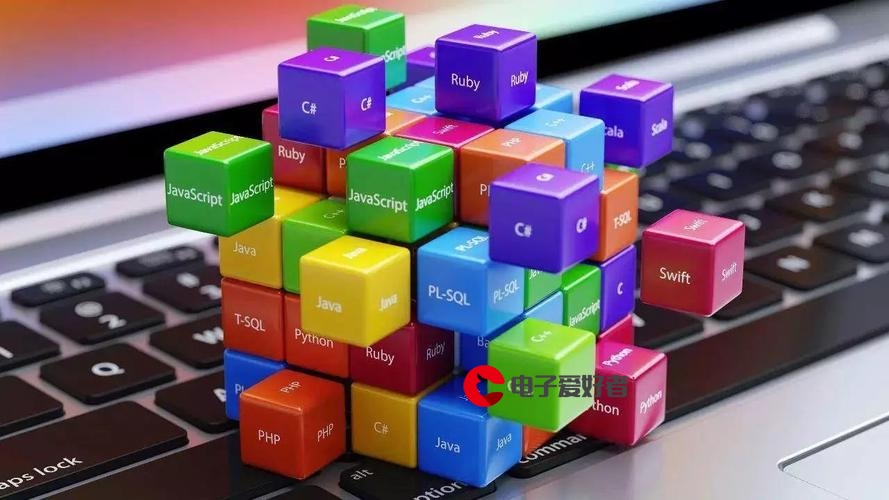 开源项目"/>
开源项目"/>
【ATTCK】开源项目
mitreattack-python是用来处理ATT&CK数据的python开源工具。
开源地址:GitHub - mitre-attack/mitreattack-python: A python module for working with ATT&CK
安装
pip3 install mitreattack-python #使用清华源pip3 install mitreattack-python -i /使用教程
1、下载attck json数据文件
.json
.json
.json
2、将下载的文件复制到当前工作目录
不然会报文件不存在的错误,或指定文件目录。
>>> mitre_attack_data = MitreAttackData("enterprise-attack.json")Traceback (most recent call last):File "<stdin>", line 1, in <module>File "C:\Users\xxxxxx\.conda\envs\attck\lib\site-packages\mitreattack\stix20\MitreAttackData.py", line 85, in __init__self.src.load_from_file(stix_filepath)File "C:\Users\xxxxxx\.conda\envs\attck\lib\site-packages\stix2\datastore\memory.py", line 148, in load_from_filereturn self.source.load_from_file(*args, **kwargs)File "C:\Users\xxxxxx\.conda\envs\attck\lib\site-packages\stix2\datastore\memory.py", line 363, in load_from_filewith io.open(os.path.abspath(file_path), "r", encoding=encoding) as f:FileNotFoundError: [Errno 2] No such file or directory: 'D:\\opt\\attck\\enterprise-attack.json'3、加载数据文件
(attck) D:\opt\attck>pythonPython 3.10.13 | packaged by conda-forge | (main, Oct 26 2023, 18:01:37) [MSC v.1935 64 bit (AMD64)] on win32Type "help", "copyright", "credits" or "license" for more information.>>> from mitreattack.stix20 import MitreAttackData>>> mitre_attack_data = MitreAttackData("enterprise-attack.json")4、常见用法4、使用案例
get_object_by_stix_id
>>> G0075 = mitre_attack_data.get_object_by_stix_id("intrusion-set--f40eb8ce-2a74-4e56-89a1-227021410142")>>> print(G0075.serialize(pretty=True)){"type": "intrusion-set","id": "intrusion-set--f40eb8ce-2a74-4e56-89a1-227021410142","created_by_ref": "identity--c78cb6e5-0c4b-4611-8297-d1b8b55e40b5","created": "2018-10-17T00:14:20.652Z","modified": "2020-03-30T19:15:49.217Z","name": "Rancor","description": "[Rancor]() is a threat group that has led targeted campaigns against the South East Asia region. [Rancor]() uses politically-motivated lures to entice victims to open malicious documents. (Citation: Rancor Unit42 June 2018)","aliases": ["Rancor"],"external_references": [{"source_name": "mitre-attack","url": "","external_id": "G0075"},{"source_name": "Rancor","description": "(Citation: Rancor Unit42 June 2018)"},{"source_name": "Rancor Unit42 June 2018","description": "Ash, B., et al. (2018, June 26). RANCOR: Targeted Attacks in South East Asia Using PLAINTEE and DDKONG Malware Families. Retrieved July 2, 2018.","url": "/"}],"object_marking_refs": ["marking-definition--fa42a846-8d90-4e51-bc29-71d5b4802168"],"x_mitre_domains": ["enterprise-attack"],"x_mitre_modified_by_ref": "identity--c78cb6e5-0c4b-4611-8297-d1b8b55e40b5","x_mitre_version": "1.2"}>>>get_object_by_attack_id
>>> T1134 = mitre_attack_data.get_object_by_attack_id("T1134", "attack-pattern")>>> mitre_attack_data.print_stix_object(T1134, pretty=True){"type": "attack-pattern","id": "attack-pattern--dcaa092b-7de9-4a21-977f-7fcb77e89c48","created_by_ref": "identity--c78cb6e5-0c4b-4611-8297-d1b8b55e40b5","created": "2017-12-14T16:46:06.044Z","modified": "2023-03-30T21:01:47.762Z","name": "Access Token Manipulation","description": "Adversaries may modify access tokens to operate under a different user or system security context to perform actions and bypass access controls. Windows uses access tokens to determine the ownership of a running process. A user can manipulate access tokens to make a running process appear as though it is the child of a different process or belongs to someone other than the user that started the process. When this occurs, the process also takes on the security context associated with the new token.\n\nAn adversary can use built-in Windows API functions to copy access tokens from existing processes; this is known as token stealing. These token can then be applied to an existing process (i.e. [Token Impersonation/Theft]()) or used to spawn a new process (i.e. [Create Process with Token]()). An adversary must already be in a privileged user context (i.e. administrator) to steal a token. However, adversaries commonly use token stealing to elevate their security context from the administrator level to the SYSTEM level. An adversary can then use a token to authenticate to a remote system as the account for that token if the account has appropriate permissions on the remote system.(Citation: Pentestlab Token Manipulation)\n\nAny standard user can use the <code>runas</code> command, and the Windows API functions, to create impersonation tokens; it does not require access to an administrator account. There are also other mechanisms, such as Active Directory fields, that can be used to modify access tokens.","kill_chain_phases": [{"kill_chain_name": "mitre-attack","phase_name": "defense-evasion"},{"kill_chain_name": "mitre-attack","phase_name": "privilege-escalation"}],"external_references": [{"source_name": "mitre-attack","url": "","external_id": "T1134"},{"source_name": "BlackHat Atkinson Winchester Token Manipulation","description": "Atkinson, J., Winchester, R. (2017, December 7). A Process is No One: Hunting for Token Manipulation. Retrieved December 21, 2017.","url": ".pdf"},{"source_name": "Microsoft Command-line Logging","description": "Mathers, B. (2017, March 7). Command line process auditing. Retrieved April 21, 2017.","url": ""},{"source_name": "Microsoft LogonUser","description": "Microsoft TechNet. (n.d.). Retrieved April 25, 2017.","url": "(v=vs.85).aspx"},{"source_name": "Microsoft DuplicateTokenEx","description": "Microsoft TechNet. (n.d.). Retrieved April 25, 2017.","url": "(v=vs.85).aspx"},{"source_name": "Microsoft ImpersonateLoggedOnUser","description": "Microsoft TechNet. (n.d.). Retrieved April 25, 2017.","url": "(v=vs.85).aspx"},{"source_name": "Pentestlab Token Manipulation","description": "netbiosX. (2017, April 3). Token Manipulation. Retrieved April 21, 2017.","url": "/2017/04/03/token-manipulation/"}],"object_marking_refs": ["marking-definition--fa42a846-8d90-4e51-bc29-71d5b4802168"],"x_mitre_attack_spec_version": "2.1.0","x_mitre_contributors": ["Tom Ueltschi @c_APT_ure","Travis Smith, Tripwire","Robby Winchester, @robwinchester3","Jared Atkinson, @jaredcatkinson"],"x_mitre_data_sources": ["Process: OS API Execution","Command: Command Execution","User Account: User Account Metadata","Process: Process Metadata","Process: Process Creation","Active Directory: Active Directory Object Modification"],"x_mitre_defense_bypassed": ["Windows User Account Control","Heuristic Detection","System Access Controls","Host Forensic Analysis"],"x_mitre_deprecated": false,"x_mitre_detection": "If an adversary is using a standard command-line shell, analysts can detect token manipulation by auditing command-line activity. Specifically, analysts should look for use of the <code>runas</code> command. Detailed command-line logging is not enabled by default in Windows.(Citation: Microsoft Command-line Logging)\n\nIf an adversary is using a payload that calls the Windows token APIs directly, analysts can detect token manipulation only through careful analysis of user network activity, examination of running processes, and correlation with other endpoint and network behavior. \n\nThere are many Windows API calls a payload can take advantage of to manipulate access tokens (e.g., <code>LogonUser</code> (Citation: Microsoft LogonUser), <code>DuplicateTokenEx</code>(Citation: Microsoft DuplicateTokenEx), and <code>ImpersonateLoggedOnUser</code>(Citation: Microsoft ImpersonateLoggedOnUser)). Please see the referenced Windows API pages for more information.\n\nQuery systems for process and thread token information and look for inconsistencies such as user owns processes impersonating the local SYSTEM account.(Citation: BlackHat Atkinson Winchester Token Manipulation)\n\nLook for inconsistencies between the various fields that store PPID information, such as the EventHeader ProcessId from data collected via Event Tracing for Windows (ETW), Creator Process ID/Name from Windows event logs, and the ProcessID and ParentProcessID (which are also produced from ETW and other utilities such as Task Manager and Process Explorer). The ETW provided EventHeader ProcessId identifies the actual parent process.","x_mitre_domains": ["enterprise-attack"],"x_mitre_effective_permissions": ["SYSTEM"],"x_mitre_is_subtechnique": false,"x_mitre_modified_by_ref": "identity--c78cb6e5-0c4b-4611-8297-d1b8b55e40b5","x_mitre_permissions_required": ["User","Administrator"],"x_mitre_platforms": ["Windows"],"x_mitre_version": "2.0"}get_software_used_by_group
# get software used by G0019>>> group_stix_id = "intrusion-set--2a158b0a-7ef8-43cb-9985-bf34d1e12050">>> software_used_by_g0019 = mitre_attack_data.get_software_used_by_group(group_stix_id)>>> print(f"Software used by G0019 ({len(software_used_by_g0019)}):")Software used by G0019 (15):>>> for s in software_used_by_g0019:... software = s["object"]... print(f"* {software.name} ({mitre_attack_data.get_attack_id(software.id)})")...* ftp (S0095)* Net (S0039)* Ping (S0097)* netsh (S0108)* Systeminfo (S0096)* PsExec (S0029)* Tasklist (S0057)* WinMM (S0059)* RainyDay (S0629)* Nebulae (S0630)* RARSTONE (S0055)* HDoor (S0061)* Sys10 (S0060)* SslMM (S0058)* Aria-body (S0456)>>>更多推荐
【ATTCK】开源项目












发布评论